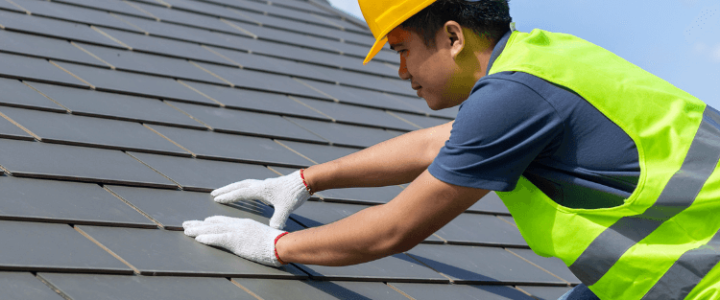The roof, commonly described as”the “crown” in a house isn’t only a practical element that offers shelter, it’s a crucial aspect of the building’s aesthetic and structural strength. The selection of the most suitable roofing materials and designs is crucial to ensure the quality, durability and effectiveness of your energy usage and the overall appearance of your home. The article below, Roofing 101 explores the variety of roofing styles and materials to help you make the best choices for your roofing needs.
Roofing Materials
- Asphalt Shingles
Asphalt shingles are among the most well-known roofing materials due to their cost and flexibility. These attractive doors come in different styles and colors that fit seamlessly with many architectural designs, making installation quick and maintenance low. However, their life span is shorter than other materials.
- Metal Roofing
Metal roofing is becoming more popular because of its durability as well as its energy-efficiency. Constructed using materials like aluminum, steel or copper roofing sheets, metal roofs provide excellent resistance against harsh weather conditions as well as long lifespans with reduced maintenance requirements and eco-friendliness – making them a highly viable alternative.
- Wood Shakes and Shingles
Wood shakes and shingles provide a natural and rustic look to homes. While shakes are thicker and offer a textured appearance, shingles are thinner and more uniform. Maintaining wood roofs is essential in protecting them against degeneration, mold growth and pest infestations. Regular maintenance will extend the lifespan of a wooden roofing while also adding charm.
- Slate Roofing
Slate roofing is known for its elegance and long lifespan. Made from natural stone, slate roofs are fire-resistant, environmentally friendly, and highly durable. However, the weight of slate tiles may require additional structural support, and the installation process can be labor-intensive.
- Clay and Concrete Tiles
Clay and concrete tiles are popular for their distinctive Mediterranean and Spanish architectural aesthetics. They’re durable, fireproof, and can withstand even extreme weather conditions without succumbing to structural reinforcement; but correct installation is key in order to avoid water seepage between tiles.
- Synthetic Roofing Materials
Synthetic roofing materials have quickly established themselves as cost-efficient alternatives to more conventional materials like wood and slate tiles, providing increased durability while decreasing maintenance expenses and overall expenses. They often mimic their look without incurring extra expenses to maintain.
Roofing Styles
- Gable Roof
Gable roofs, often called an incline or peaked roof, is one the most well-known roof styles. It is characterized by two sides that slope and an elongated central ridge. This layout allows for effective drainage of water as well as ample attic space. It is an ideal choice for all conditions.
- Hip Roof
A hip roof has slopes on all four sides that come together to form a ridge. This style provides extra stability for areas subject to high winds or intense rainfall. Hip roofs can provide additional living space within the attic while lending a visually appealing, modern look to the home.
- Mansard Roof
The Mansard roof, often associated with French architecture, features a double slope on all four sides. The slope on the lower side is more steep and the higher slope is softer.
- Flat Roof
Flat roofs have a minimal slope, allowing for easy installation and maintenance of HVAC units, solar panels, or rooftop gardens. Flat roofs are commonly found in contemporary and modern architectural styles.
- Gambrel Roof
The gambrel roof resembles a barn roof with two different slopes on each side. Gambrel roofs are often seen on colonial and Dutch colonial homes.
- Shed Roof
The shed roof is a single-sloped roof that’s simple and cost-effective. While it may not offer as much attic space as other styles, it’s efficient in shedding water and snow.
The final decision to choose the best roofing materials and design requires a mix of personal preferences for aesthetics as well as climate and financial limitations. Every roofing style and material is accompanied by each of its benefits and disadvantages, therefore it is essential to research thoroughly and speak with experts before making a choice. An appropriately chosen roof not just improves the appearance of your house, but it also provides safety and security for the long time to in the future. Roofing 101 provides your with the fundamental information to begin this crucial process of deciding on a roofing design.

